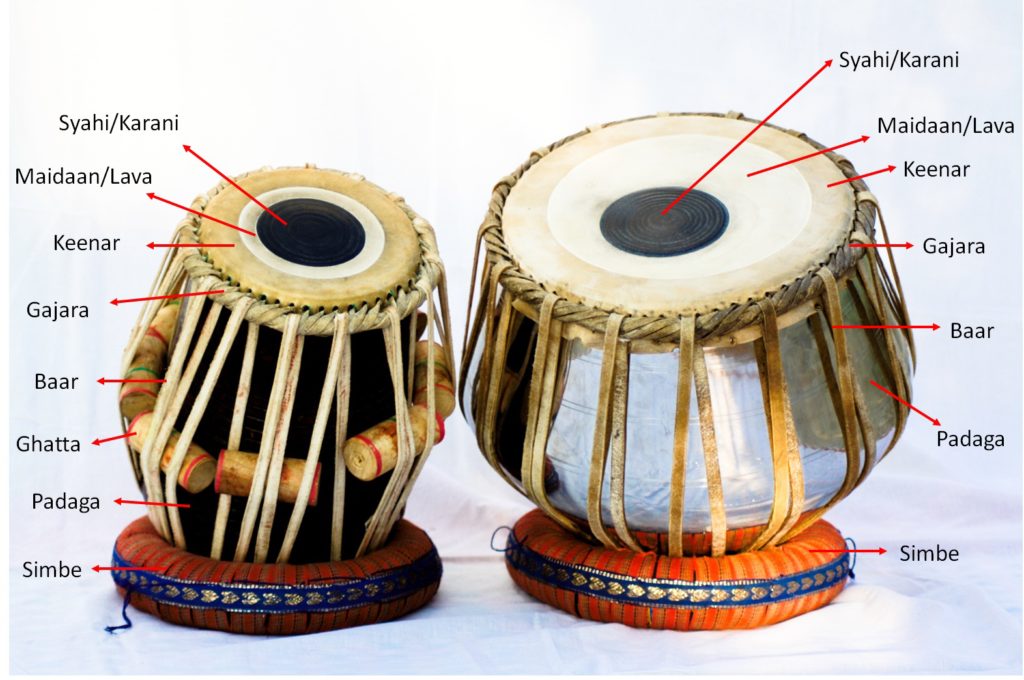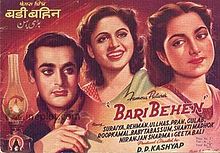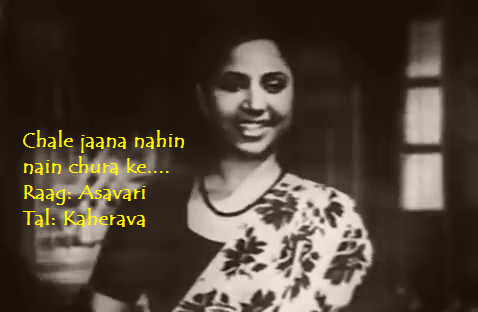Raaga Based Song of the Day: Chale jaana nahin nain chura ke…
Raag Asavari, Tal Kaherava
We have completed thirty-five days of Raaga Based Songs of the Day. Our first post in the series was titled ‘Raaga Based Song Of The Day #1’ and the song was a Mohammad Rafi and Lata Mangeshkar song from the 1970 Shakti Samanta movie Pagla Kahin Ka: Tum mujhe youn bhula na paoge. It is in Raag Jhinjhoti, Tal Kaherava.
Our thirty-fifth post was titled ‘Raaga Based Song Of The Day #35’ and the song was a Mohammad Rafi song from the 1958 Shaheed Lateef movie Sone Ki Chidiya: Raat bhar ka hai mehman andhera. It is in Raag Jogiya, Tal Dipchandi (Moghali).
This blog has a number of posts on Raaga based songs in Hindi movies titled similarly; for example: ‘The Best Raaga Based Songs in Hindi Movies – Raaga Darbari Kanada – Part III‘.
In the last thirty-five days of sharing Raaga based songs of the day, I have given you songs based on Raag Jhinjhoti, Gara, Bhimpalasi, Madhuvanti, Shivaranjani, Bihag, Pahadi, Sarang, Pilu, Bhairavi, Khammaj, Charukesi, Kalyan or Yaman, Desh, Malgunji, Kirwani, Kedar, Bageshri, Megh Malhar, Bhupali, Ahir Bhairav, Malkaush, Adana, Kafi, Rageshri, Jaunpuri, Tilang, Janasammohini, Chayanat, Shuddha Kalyan, Gaur Sarang and Jogiya. The only raag that has been repeated so far is Pahadi, the raaga of my home place.
Today, I give you a song in Raag Asavari, Tal Kaherava.
However, first, lets take up the value added learning of today. Today, we shall learn a little more about Tabla:
Tabla is one of the two percussion instruments in Hindustani music that produces Tal or rhythm (the other is Pakhwaj) whereas the melody is produced by Vocals, Sitar, Sarod, Surbahar, Rudra Veena, Violin, Sarangi, Esraj/Dilruba, Bansuri, Shehnai, Santoor, Harmonium, and Jal Tarang, and Tanpura, Shruti Box and Swarmandal are used to producing drone.
Initially, when I started giving you the raaga based songs of the day, I mentioned to you that it was as late as in the 18th century that Tabla was used to keep the Tal. Before that, and to some extent even now, Tal is kept by the clap (Bhara) or wave (khali) of the hand. Tabla consists of a pair of drums (the word tabla is likely to have originated from the Persian word Tabl meaning drum). The pair is actually two small barrel drums (to be beaten with hands). Daya drum is the dahina drum or right and Baya is bahina or left. Out of the two, the Baya drum is a little bigger (about eight inches in dia and ten inches high) than the Daya (six inches by 10 inches). The Daya is tuned to the ground note of the raaga called Sa. Tal is produced both by the heel of the hand (to change the pitch) and the complex use of the fingers.

In the Hindustani style tabla is played in two ways: band bol (Tali) and khula bol (Khali). Tabla is used extensively in raaga based singing in gurudwaras and temples and in Sufi music.
Some basic strokes with the dayan on the right side and the bayan on the left side are:
- Ta: (on dayan) striking sharply with the index finger against the rim while simultaneously applying gentle pressure to the edge of the syahi with the ring finger to suppress the fundamental vibration mode.
- Ghe or ga: (on bayan) holding wrist down and arching the fingers over the syahi; the middle and ring-fingers then strike the maidan (resonant).
- Thin: (on dayan) placing the last two fingers of the right hand lightly against the syahi and striking on the border between the syahi and the maidan (resonant).
- Dha: combination of Na and Ghe.
- Dhin: combination of Tin and Ghe.
- Ka or kath: (on bayan) striking with the flat palm and fingers (non resonant).
- Na: (on dayan) striking the edge of the syahi with the last two fingers of the right hand.
- Te: (on dayan) striking the center of the syahi with the middle finger (non resonant).
- Tu | Tun: (on dayan) striking the center of the syahi with the index finger to excite the fundamental vibration mode (resonant).
- Dhere dhere (on dayan) striking of syahi with palm.
As I mentioned, today’s song is composed in Raag Asavari, Tal Kaherava.
Asavari is the principle raaga of Asavari Thaat in the Bhatkhande’s system of raagas. Asavari, as anyone who reads Sri Guru Granth Sahib would know, is a raaga of the mornings. However, some of the important raagas of Asavari Thaat are sung at nights: eg, Adana and Darbari. Its Jati is Audhav-Sampoorna. The mood of the raaga is Tyag, sacrifice or renunciation.
Two of the other songs composed in Raag Asavari are: Jadoo teri nazar, khushbu tera badan (Tal Kaherava), and Mujhe gale se laga lo bahut udaas hoon main (Tal Kaherava).
 I have taken today’s song from the 1949 movie Badi Bahen directed by DD Kashyap. The movie starred Suraiya, Rehman, Ullhas and Pran. If you see in the video Geeta Bali singing this song to the villain Pran it is because of the story, also by DD Kashyap:
I have taken today’s song from the 1949 movie Badi Bahen directed by DD Kashyap. The movie starred Suraiya, Rehman, Ullhas and Pran. If you see in the video Geeta Bali singing this song to the villain Pran it is because of the story, also by DD Kashyap:
“Shyama (Suraiya) gets a job as a servant so she can pay for her younger sister, Kiran’s (Geeta Bali) education in the city. Kiran, though, is in love with a rogue, Ajit (Pran). Ajit makes Kiran splurge all the money Shyama sends her on them. Meanwhile, Shyama meets and falls in love with Shyam (Rehman), the son of the family she works for and who is a doctor who wants to treat the poor. With both being ill-treated by the woman of the house, who is Shyam’s step mother, they decide to elope. However, Kiran comes to her, abandoned and impregnated. Shyama goes along with her without informing Shyam in order to find Ajit. They find Ajit but he escapes from them. The two sisters then relocate to another town. Kiran has the child, Shyama works in another house, where in order to get Kiran settled with the young man of the house and to prove her to be without blemish, she takes it upon herself to claim to be the mother of the child. This causes further complications with Shyam, who has managed to trace her out and now believes that she has been unfaithful to him. Wallowing in grief, he falls ill. Finally, with the help of a kindly army Colonel, also Ajit’s uncle (Ulhas), all ends well that well with a repentant Ajit marrying Kiran and Shyama reunited with Shyam.”
The song was penned by Rajinder Krishan and composed by Husanlal Bhagatram, Hindi movies’ first music duo.
Please enjoy Lata Mangeshkar sing in Raag Asavari, Tal Kaherava: Chale jaana nahin nain chura ke….
Chale jaanaa nahii.n, nainaa milaake
Haay! sai.nyyaa bedardii, sai.nyyaa bedardii
Merii qasam tumhe mere hii hoke rahanaa
Dilo.n kii baat kisii aur se nahii.n kahanaa
Bairii duniyaa se rakhanaa chhupaa ke
Haay! sai.nyyaa bedardii, sai.nyyaa bedardii
Chale jaanaa nahii.n …
Nanhii.n sii jaan merii kaho na jalaaoge
Chho.D ke mujhe kahii.n chale to na jaaoge
Bhuul jaanaa nahii.n dil me.n basaa ke
Haay! sai.nyyaa bedardii, sai.nyyaa bedardii
Chale jaanaa nahii.n …
We have intended to learn about Raaga based music whilst we entertain ourselves with Raaga based songs. So, lets, once again, take stock of our collective learning so far:
- On the first day we learnt about the Raaga system devised by Pandit Vishnu Narayan Bhatkhande, which is the prevalent system in Hindustani Classical Music and based on ten Thaats.
- On the second day we learnt about Tal or Taal.
- On the third day we learnt about characteristics of Raagas that included Swar, Jati, Thaat, Arohana and Avarohana, Vadi, Samvadi and Pakad.
- On the fourth day, we learnt about Sargam.
- On the fifth day, we learnt about notations used in Indian classical music or simply Swar Lipi.
- On the sixth day, we learnt about the Ras (sentiments) that Raagas evoke.
- On the seventh day, we learnt about various types of Swar: Shuddha, Achal, Vikrut, Komal and Teevra.
- On the eighth day, we learnt the parts of a composition in Indian Classical Music.
- On the ninth day, we learnt the names of some of the popular instruments used in Indian Classical Music.
- On the tenth day, we learnt about the sources of names of Raagas.
- On the eleventh day, we learnt about why Bhairavi is the first raag to be taught to beginners and also why it is the last in a performance.
- On the twelfth day, we learnt about Khammaj Thaat.
- On the thirteenth day, we learnt about Tal Punjabi Theka or Sitarkhani.
- On the fourteenth day, we learnt about Alap.
- On the fifteenth day, we learnt about List of Raagas (Raagmala) in my favourite book: Sri Guru Granth Sahib.
- On the sixteenth day, we learnt about tips for raaga identification.
- On the seventeenth day, we learnt the basics of Gharana system.
- On the eighteenth day, we learnt about Filmi Sangeet.
- On the nineteenth day, we learnt about the commonest Tal in Raagas: Tintal.
- On the twentieth day, we learnt about the Kafi Thaat.
- On the twenty-first day, we learnt a little more in detail about the classification of Raagas.
- On the twenty-second day, we learnt the essential differences between Bhairavi and Bhairav.
- On the twenty-third day, we learnt a little more in detail about the Jati or Jaati of a raaga.
- On the twenty-fourth day, we learnt details of Thaat Bilawal, the most basic thaat in the Bhatkhande’s system of raagas.
- On the twenty-fifth day, we learnt about Tintal.
- On the twenty-sixth day, we learnt in detail about the Raaga – Samay linkage.
- On the twenty-seventh day, we learnt about Lehar.
- On the twenty-eighth day, we learnt about the history of the Hindustani Music.
- On the twenty-ninth day, we learnt about Dhrupad.
- On the thirtieth day, we learnt about Rupaktal that I was introduced to, a few months back, by my friend Anand Desai.
- On the thirty-first day, we learnt about Khayal.
- On the thirty-second day, we learnt about Thumri.
- On the thirty-third day, we learnt about Tappa.
- On the thirty-fourth day, we learnt about Tarana.
- On the thirty-fifth day, we learnt about Tal Dipchandi (Moghali).
- And today, on the thirty-sixth day, we learnt about Tabla.
There is much more still to be learnt and enjoyed.
Please stay tuned!
